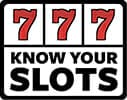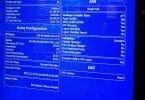This week’s slot payback look takes us to South Dakota. This is another state, like Florida and New York, where not all casinos report payback. Tribal casinos in the state, like in many others, do not have a requirement to report their payback data.
However, commercial casinos in Deadwood do report. That reporting is rolled up into a statewide report, so there is no casino by casino breakdown.
The statistics are broken down into eight denominations, however, giving a lookat how slots pay across various denominations.
At the time of this write-up, the 2022 fiscal year annual report had not been posted to their website yet. This article will get updated once that document is available.
Here is a look at fiscal years 2018-2021. A fiscal year is the period from July 1 of one year to June 30 of the next year, so the 2021 fiscal year covers July 1, 2020 through June 30, 2021.
| Year | 2021 | 2020 | 2019 | 2018 |
| 1 cent | 90.71% | 90.60% | 90.72% | 90.69% |
| 5 cent | 90.65% | 91.06% | 91.01% | 90.80% |
| 25 cent | 90.72% | 91.03% | 91.17% | 90.95% |
| $1 | 92.76% | 92.66% | 92.51% | 92.36% |
| $5 | 93.80% | 92.66% | 93.13% | 91.03% |
Some observations from the data:
- South Dakota reports data for eight denominations, but three (10 cent, 50 cent and $25) have less than 10 machines reporting data, which makes the statistical size much smaller, and harder to compare. I removed those three from the chart for that reason, but the data is on their website for review.
- The data is pretty stable from one year to the next, with the exception of the $5 denomination, which itself has less than 100 machines in play, which makes the variance more likely to be bigger from year to year.
- There isn’t a big difference between penny, nickel and quarter denominations, so if you’re looking to get a boost on payouts by increasing denomination, $1 denomination seems to be where you have to go.








